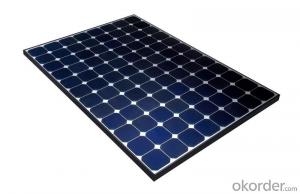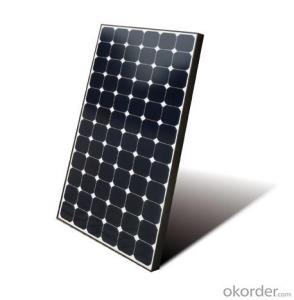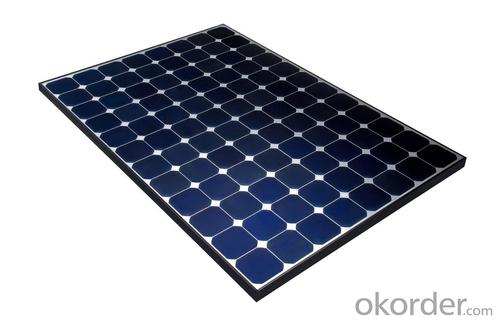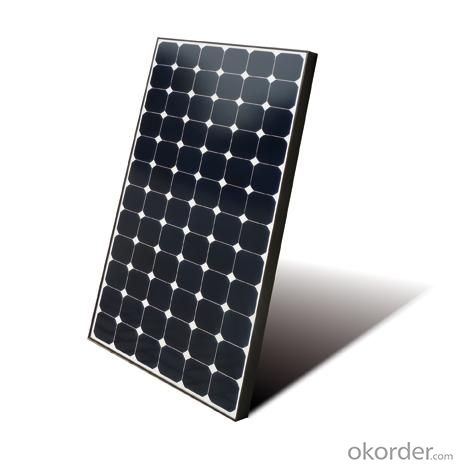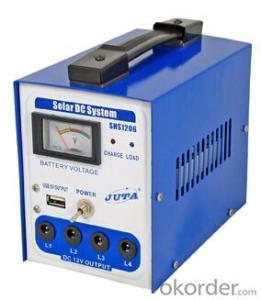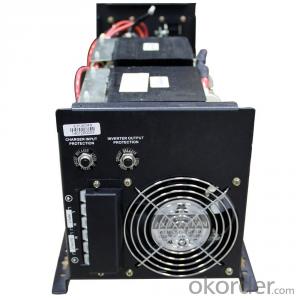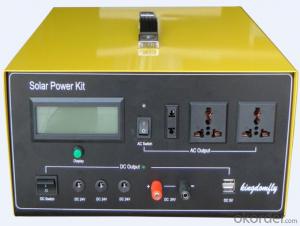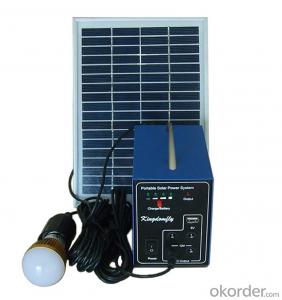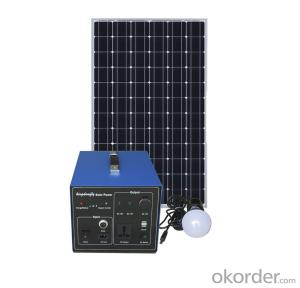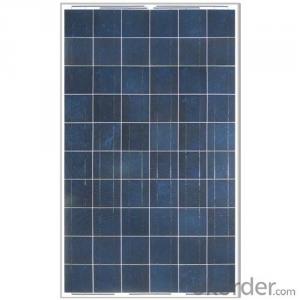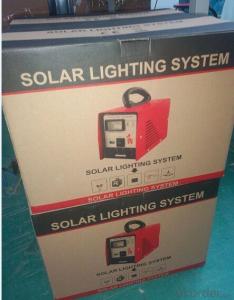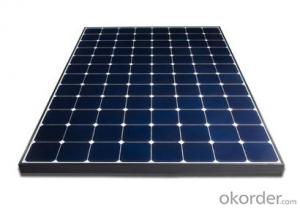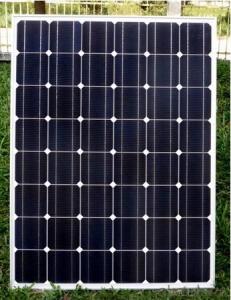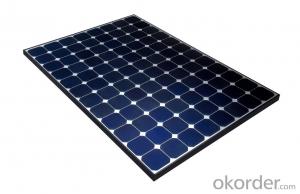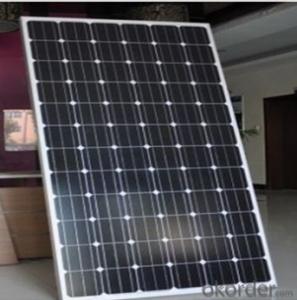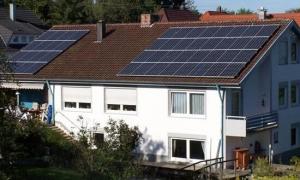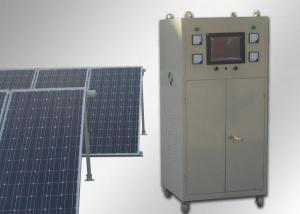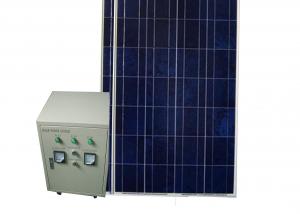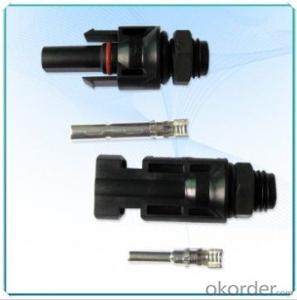3000W Solar Energy Systems in Indiana - Approved by TUV UL CE
- Loading Port:
- Shanghai
- Payment Terms:
- TT OR LC
- Min Order Qty:
- 1 pc
- Supply Capability:
- 100 pc/month
OKorder Service Pledge
OKorder Financial Service
You Might Also Like
Specification
3000W Solar Home Solution Approved by TUV UL CE
Production description
PV array:
Convert sunlight instantly into DC electric power. Formed by the solar modules (also called photovoltaic
modules) in accordance with the system requirements for series and parallel.
Solar charge controller:
A charge controller may be used to power DC equipment with solar panels. The charge controller
provides a regulated DC output and stores excess energy in a battery as well as monitoring the battery
voltage to prevent over charge or over discharge. An inverter can be connected to the output of a charge
controller to drive AC loads.
Inverter:
Converts DC output power of photovaltaic soalr panels into standard AC power for use in the local off-grid
electrical network. It is a critical component in a photovoltaic system, allowing the use of ordinary
commercial appliances.
Battery banks:
Stores energy when there is an excess coming in and distribute it back out when there is a demand. Solar
PV panels continue to re-charge batteries each day to maintain battery charge.
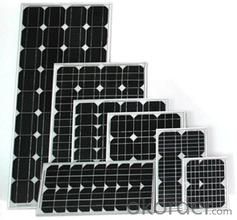
Feature
1.High conversion efficiencies resulting in superior power output performance.
2.Outstanding power output even in low light or high temperature conditions
3.Optimized design for ease of soldering and lamination
4.Long-term stability,reliability and performance
5.Low breakage rate
6.Color uniformaity
Physical characteristic
1. Rigorous quality control meets the highest international standards.
2. High-transmissivity low-iron tempered glass, strong aluminium frame.
3. Using UV-resistant silicon.
4. IS09001/14001/CE/TUV/UL
- Q: Can solar energy systems be installed on religious institutions?
- Yes, solar energy systems can be installed on religious institutions. Many religious institutions have embraced solar energy as a sustainable and environmentally friendly solution to meet their energy needs. Installing solar panels on religious buildings not only helps reduce their carbon footprint but also allows them to save on electricity costs in the long run. Additionally, it aligns with the values of stewardship and care for the environment that many religious faiths promote.
- Q: Can solar energy systems be installed on military bases or installations?
- Yes, solar energy systems can be installed on military bases or installations. In fact, many military bases have already embraced solar energy as a sustainable and cost-effective solution. These systems not only help reduce dependence on fossil fuels but also enhance energy security and resilience for military operations. Furthermore, solar installations on military bases contribute to the overall goal of transitioning towards renewable energy sources and reducing carbon emissions.
- Q: What is the role of solar energy systems in reducing energy poverty?
- Solar energy systems play a crucial role in reducing energy poverty by providing affordable and sustainable electricity to communities that lack access to the traditional power grid. These systems harness the abundant sunlight to generate clean and renewable energy, which can power homes, schools, hospitals, and other essential facilities. By bypassing the need for expensive infrastructure and fuel imports, solar energy systems offer a cost-effective solution for meeting basic energy needs in remote and underprivileged areas. They not only improve the quality of life and economic opportunities for those affected by energy poverty but also contribute to mitigating climate change and enhancing energy security.
- Q: Can solar energy systems be used in camping or outdoor activities?
- Yes, solar energy systems can be used in camping or outdoor activities. Portable solar panels, solar-powered lanterns, and solar chargers for electronic devices are some examples of solar energy systems that are designed for outdoor use. These systems harness the power of the sun to provide renewable energy, making them an eco-friendly and convenient solution for powering equipment and devices during camping or other outdoor activities.
- Q: Can solar energy systems be used in powering street lights?
- Yes, solar energy systems can be used in powering street lights. Solar panels can be installed on street light poles or nearby rooftops to capture sunlight and convert it into electricity. This clean and renewable energy source can then be used to power the street lights, reducing the dependence on traditional grid electricity and lowering overall energy costs. Solar-powered street lights are increasingly being adopted globally as an environmentally friendly and sustainable lighting solution.
- Q: What is solar battery storage?
- Solar battery storage refers to the technology that allows energy generated from solar panels to be stored in batteries for later use. It is a system that captures excess electricity produced by solar panels during the day and stores it in batteries, instead of sending it back to the grid. This stored energy can then be utilized during times when the solar panels are not producing enough electricity, such as at night or during cloudy days. Solar battery storage has several benefits. Firstly, it enables homeowners and businesses to become more self-sufficient and reduce their reliance on the traditional electrical grid. By storing excess energy, they can use it during peak demand periods or when there is a power outage, ensuring a constant and uninterrupted power supply. Additionally, solar battery storage helps optimize the use of solar energy. As solar panels often produce more electricity than what is immediately needed, the excess energy would typically be wasted or sent back to the grid. With battery storage, this excess energy can be stored and used later, maximizing the utilization of solar power and reducing the need for fossil fuel-based electricity. Furthermore, solar battery storage can also help in reducing electricity bills. By using stored energy during peak demand periods when electricity rates are higher, users can avoid paying higher prices for electricity from the grid. This can result in significant cost savings over time. Overall, solar battery storage is an innovative technology that enhances the efficiency and reliability of solar energy systems. It enables users to store excess energy for later use, reducing reliance on the grid, optimizing solar power utilization, and potentially saving money on electricity bills.
- Q: How often do solar panels need to be cleaned?
- Solar panels generally need to be cleaned at least once or twice a year to ensure optimal performance. However, the frequency of cleaning can vary depending on factors such as the local climate, amount of dust or debris accumulation, and the tilt angle of the panels. Regular inspections and maintenance can help determine the specific cleaning needs of solar panels.
- Q: Can solar energy systems be used in urban environments?
- Yes, solar energy systems can definitely be used in urban environments. In fact, urban areas can be ideal for solar energy due to the high population density and availability of rooftop spaces. Solar panels can be installed on buildings, homes, and other structures in cities to harness the power of the sun and provide clean and renewable energy. Additionally, advancements in solar technology have made it possible to integrate solar panels into various urban infrastructure, such as streetlights and bus stops, further expanding the use of solar energy in urban environments.
- Q: Can a solar energy system be installed in areas with high seismic activity?
- Certainly! Solar energy systems can be installed in regions with significant seismic activity. However, it is vital to guarantee that the system is designed and installed to withstand the potential impacts of seismic events. There are several measures that can be taken to enhance the system's resilience, including: 1. Strengthened Mounting Structures: Typically, solar panels are mounted on structures like rooftops or ground-mounted frames. These structures should be designed to endure seismic forces, including ground shaking. Utilizing reinforced materials and additional bracing can make the mounting structures more robust. 2. Flexible Wiring and Connectors: Special consideration should be given to the installation of flexible wiring and connectors, as solar panels are connected through wiring. This allows for some movement during seismic events, reducing the risk of damage or disconnection. 3. Secure Panel Installation: To prevent solar panels from dislodging during an earthquake, it is important to securely fasten them to the mounting structures. Additional measures like using specialized clamps or adhesives can enhance the stability of the panels. 4. Proper Grounding: Ensuring proper grounding of the system is crucial to protect against electrical surges and potential damage caused by seismic events. It is important to adhere to local electrical codes and guidelines to ensure the system is safely grounded. 5. Regular Inspections and Maintenance: Conducting regular inspections helps identify any potential issues or damage to the solar energy system. Prompt maintenance and repairs can help mitigate any risks associated with seismic activity. By adhering to these guidelines and collaborating with experienced professionals, it is feasible to successfully install and operate a solar energy system in areas with high seismic activity.
- Q: Are there any aesthetic considerations when installing a solar energy system?
- Yes, there are aesthetic considerations when installing a solar energy system. These considerations include the placement and design of solar panels to blend harmoniously with the surrounding environment and architectural style of the building. Additionally, efforts are made to minimize the visual impact of wiring and equipment, ensuring a visually pleasing installation.
Send your message to us
3000W Solar Energy Systems in Indiana - Approved by TUV UL CE
- Loading Port:
- Shanghai
- Payment Terms:
- TT OR LC
- Min Order Qty:
- 1 pc
- Supply Capability:
- 100 pc/month
OKorder Service Pledge
OKorder Financial Service
Similar products
Hot products
Hot Searches
Related keywords

